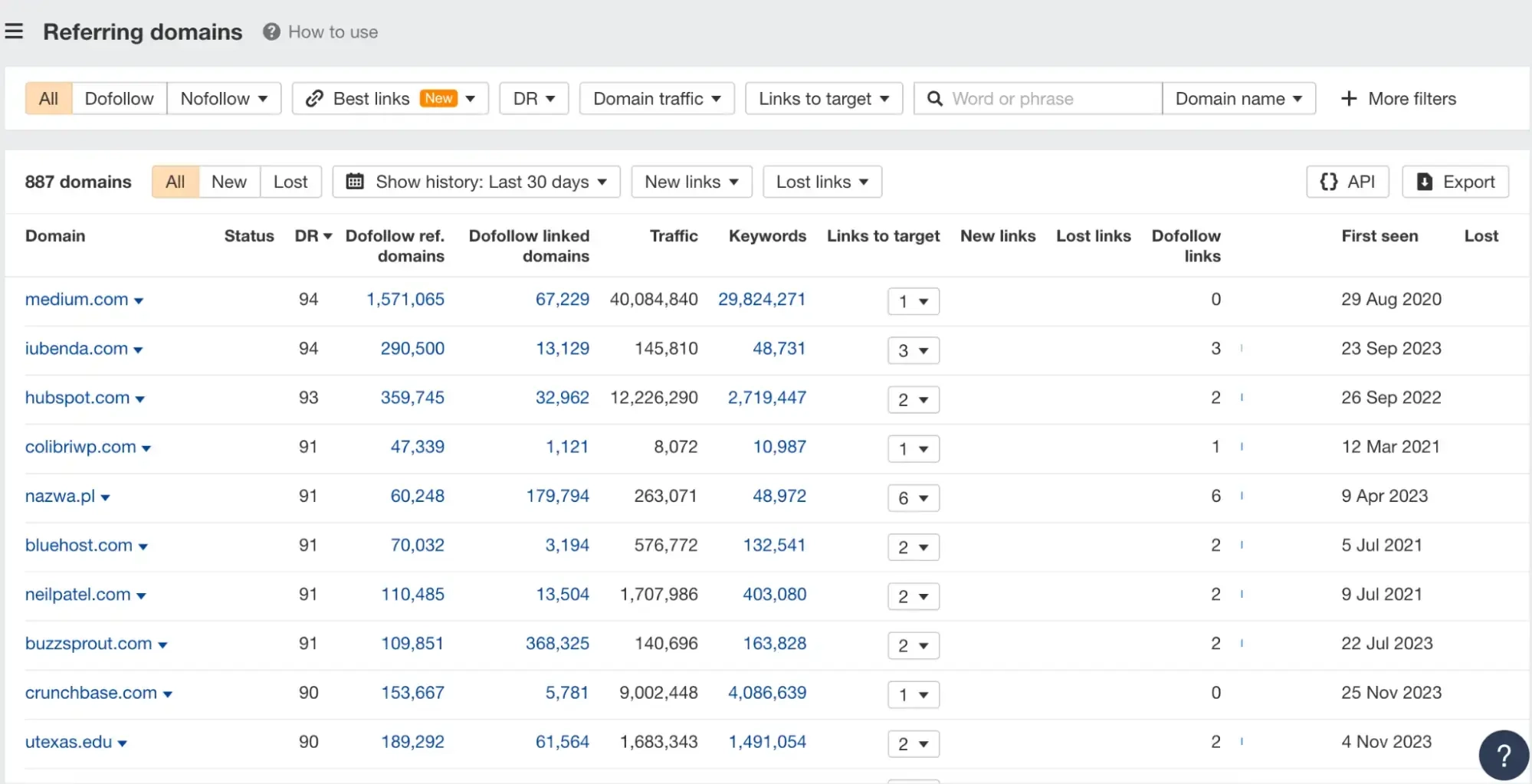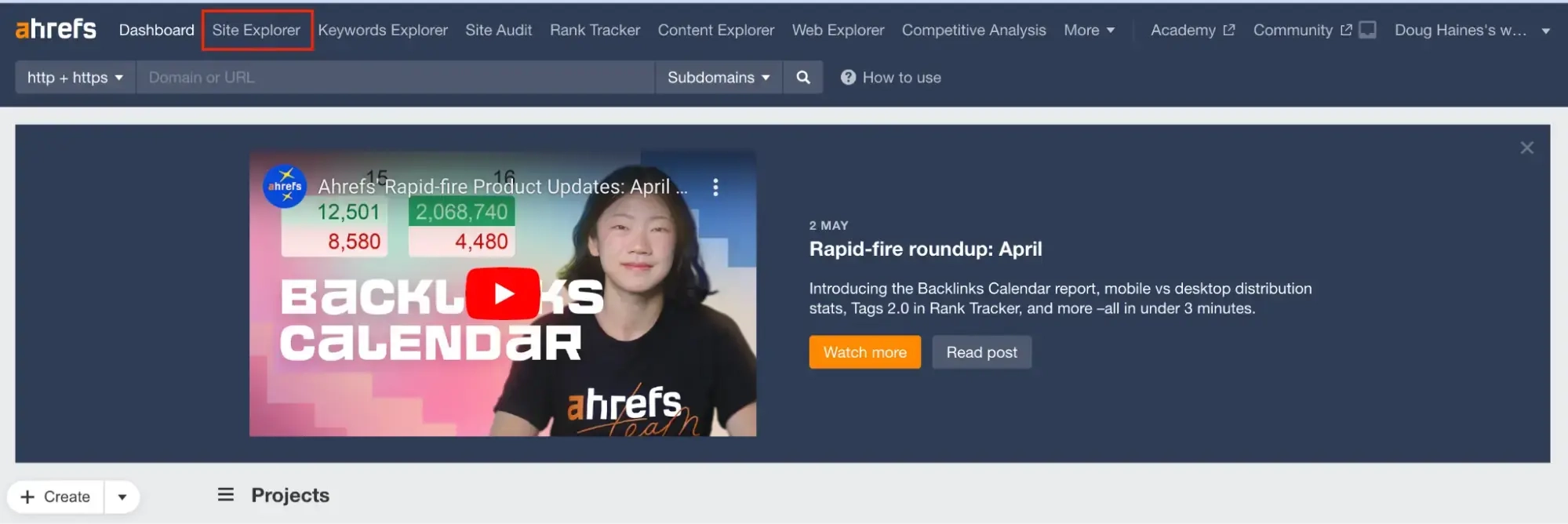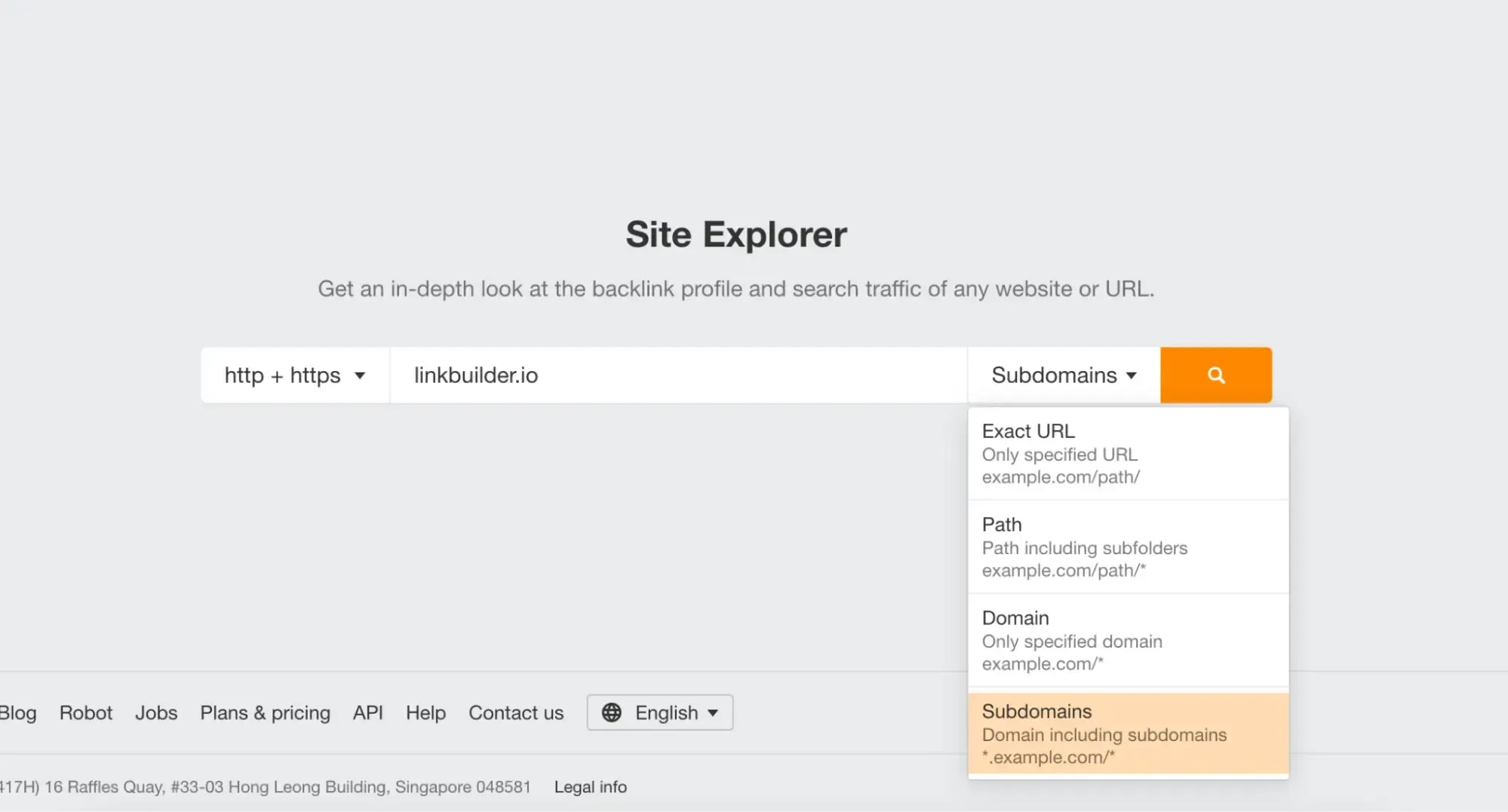
Referring Domains Vs. Backlinks: What’s The Difference?

Stewart
Chief Link Building Strategist
The quality and quantity of your backlinks and referring domains are critical factors in determining your website’s placement in search results.
If you've ever found yourself wondering what the difference is between referring domains and backlinks, you’re at the right place.
In this article, we explore each term in detail and show you how they can improve your SEO strategy.
Once you know the difference between referring domains and backlinks, you'll be equipped to optimize your website and make strides toward securing a top spot in Google’s search engine result pages (SERPs).
💡Key Takeaways
Backlinks are hyperlinks from one website to another.
Referring domains are websites that link back to yours, and they represent the source of backlinks.
You should prioritize quality over quantity when building backlinks.
Creating appealing content, conducting original research, and optimizing for SEO can attract more high-quality links.
Reach out to Linkbuilder for strategies to expand your reach and improve your ranking in Google’s search results.
A backlink is essentially a hyperlink from one website to another.
The fundamental reason they exist is to create pathways between pages on the web. For example, a backlink might provide further information on a topic, cite sources, or direct users to related content.
In addition, backlinks help crawlers navigate the web, so search engines can gain a better understanding of what your website is about and whether it’s a credible source of information.
ℹ️ Understanding Web Crawlers
When you search on Google, it doesn’t merely scour the internet for your search terms in real-time to deliver your search results.
It also involves web crawlers continuously traversing the web to gather data about each webpage. By following backlinks, they discover new content and understand how different pages are connected.
This helps search engines determine the relevance and authority of web pages, ultimately influencing their ranking in search results.
Backlinks can come from other website’s blog posts, social media posts, or even within their service pages.
They can appear in multiple places, including:
As anchor text.
In images.
In videos.
In infographics.
In call-to-action buttons.
ℹ️ Are Internal Links Backlinks?
Not all links are considered backlinks.
Links that connect pages within your own website are called "internal links."
While backlinks help your website establish credibility to drive your SERP rankings, internal links improve your site structure and navigation for both users and search engines.
Although it’s important to optimize both, they each serve different purposes.
What Is a Referring Domain?
A referring domain is a website that has linked back to your site. It represents the source of one or more backlinks to your web pages.
For example, if Forbes.com links to your website six times, Forbes.com counts as a single referring domain—although each backlink counts as an individual backlink.
In the example below, you can see that at Linkbuilder, we have 5,200 backlinks from 857 referring domains.
This means that, on average, we get around 6 links from each unique referring domain:

How Do Backlinks and Referring Domains Impact SEO?
Although there are many types of backlinks, not all of them are created equal.
The value of receiving a backlink increases significantly if it meets certain criteria, including:
✅ Credible source: The backlink comes from an authoritative referring domain.
✅ Relevance: The backlink leads visitors to useful content on your site, such as an insightful blog post or infographic.
✅ Visibility: The backlink directs traffic to your website, and is not hidden in footer text.
Here’s an example of a backlink from one of our blogs on Tiered Link Building:

In the example above, "off-page search engine optimization (SEO)" serves as anchor text for a backlink to Search Engine Journal, a website known for its coverage of SEO topics.
This backlink is a good example of a contextual, keyword-rich anchor link.
While a backlink is the actual link shown on a webpage, the referring domain is the website that the backlink originates from.
So, why does Google consider referring domains so important?
Say, for example, you're deciding on a movie to watch and you ask around for recommendations.
If many different people each suggest the same movie, you'll probably think it must be good.
On the other hand, if only one or two people keep recommending the same movie over and over again, it doesn't seem quite as convincing.
The same logic applies to how Google views backlinks.
When your website receives a few links from many referring domains, it suggests that a wide variety of website owners finds your website valuable.
If most of your links come from just a few referring domains, it doesn't provide as strong an endorsement.
In extreme cases—for example, if you have an excessive volume of backlinks from only one referring domain—it could breach Google’s guidelines.
Some people buy or build links from spammy websites in an attempt to manipulate their search engine rankings, and Google’s algorithms are adept at spotting these attempts.
💡What Is Domain Rating or Domain Authority?
Domain rating (DR), sometimes known as domain authority, is a measurement of a website’s likelihood to rank high on search engines. Links from websites with high DR generally confer a greater ranking benefit than those with lower authority scores.
The number and quality of backlinks and referring domains pointing at a website are some of the main factors affecting its DR score.
The backlink profile shown below is an example of a website with backlinks from very few referring domains:

While there is no limit to the number of backlinks you are allowed to receive from a single referring domain, these numbers look suspicious.
Let’s investigate their backlink profile further:

It’s clear that the website has acquired links from dubious websites—the most notable being 274 backlinks from a website that promotes itself as a “backlink checker”:

Although many of its other referring domains have a high domain rating, this isn’t enough to offset spammy link-building practices. This is why the website has a domain rating of only 1.7, despite having a decent number of backlinks.
Because developing a natural and diverse backlink profile has such a significant impact on your SEO, it’s an essential part of link building.
Remember, it’s not just about getting more referring domains—it’s also about the quality of those domains.
💡 Choosing between quality and quantity
Having links from more referring domains isn’t necessarily better. Quality counts just as much as quantity.
For the most impactful SEO benefit, it’s better to pursue high-quality links from authoritative referring domains rather than acquiring many links from low-quality domains.
Here’s why:
✅ Credibility
High-quality domains are well-respected, credible, and authoritative.
Links from these sites signal to search engines that your website is also regarded as trustworthy and valuable, which can improve your own domain authority.
✅ Resilience against penalties
Relying on links from only a few referring domains can be risky. If these domains are penalized or if they remove their links, your site could suffer.
Having a broad base of referring domains reduces the risk of being impacted by the loss of a single source.
✅ Long-term benefits
While gaining links from high-quality domains can be challenging, they provide more sustainable SEO benefits.
These links are often from sources that maintain their credibility over time, ensuring that the benefits they bring, last.
✅ Audience quality
Remember, SEO is just the beginning of the journey. You don’t just want users to find your website—you also want them to engage and convert!
Visitors from reputable sites are likely to be interested in and engage more with your content, which can ultimately lead to higher conversion rates.
How to Use Ahrefs to See Your Referring Domains
Here’s a step-by-step guide on how to use Ahrefs to see your referring domains:
Step 1: Navigate to the ‘Site Explorer’ tool
Once you’ve signed into your account, go to the ‘Site Explorer’ section of Ahrefs:Ahref Dashboard

Step 2: Enter your URL into the search bar
This tool allows you to explore in-depth details about your website’s backlink profile, organic search traffic, and other key metrics:

You’ll notice that there are various search options that allow you to specify different levels of granularity for tracking and analyzing backlinks, referring domains, and other SEO metrics.
“Subdomains” is the broadest option, and it encompasses the main domain and any of its subdomains.
This option provides a comprehensive view of the entire domain's backlink profile, including all its subdomains.
Step 3: Access the referring domains report
In the Site Explorer, you will see a panel on the left-hand side with various options.
Click on "Referring domains" to see all the domains that are currently linking to your website:

Step 4: Analyze your referring domains
The referring domains report provides a list of all domains that link to your site along with useful metrics such as:
✅ Domain rating (DR): This shows the strength of the linking website’s backlink profile.
✅ Number of Dofollow links: This counts the links that pass SEO value to your site.
✅ Referring pages: This shows how many pages on the domain are linking to your website.

While an initial glance at our referring domains report might create the impression that Linkbuilder only gets backlinks from extremely high domain authority sites, this isn’t the case.
Let’s see what happens if we sort our results from lowest to highest domain authority:

Like most other websites, Linkbuilder has backlinks from a variety of referring domains with different domain ratings.
So, that leads to the big question:
💡Should you disavow backlinks from low-quality referring domains?
No, you should not automatically disavow backlinks from referring domains with a low domain rating.
The goal of your backlink profile should be for it to appear natural, not to seem "perfect" by only having backlinks from referring domains with a high domain rating.
Over the years, the Google algorithm has evolved and is capable of understanding and disregarding low-quality or spammy backlinks automatically.
Actively trying to disavow each lower-quality one is unnecessary and could even be counterproductive.
💬 What Google Says About Disavowing Links
In most cases, Google can assess which links to trust without additional guidance, so most sites will not need to use this tool.
You should disavow backlinks only if:
You have a considerable number of spammy, artificial, or low-quality links pointing to your site.
The links have caused a manual action, or are likely to cause a manual action, on your site.
How to Increase Your Number of Referring Domains
While it's great for your SEO to boost the number of referring domains linking to your website, it's even better to focus on the quality and authority of those domains.
To get more backlinks from high-quality referring domains, you need to create high-quality content. This is easier said than done, but it's achievable with the right approach.
Here are a few strategies to ensure the content you create attracts high-quality backlinks:
⚡ Focus on original research and data
Presenting original research and sharing insightful data are goldmines for attracting attention and backlinks from authoritative sites.
When you provide new insights or compelling data, other websites—especially those within your industry—are more likely to reference you and link to your work.
Here are some types of research you may want to consider:
Audience surveys.
In-depth market analysis.
Data-driven case studies.
Industry forecasts.
White papers.
⚡ Create a resource guide
Developing comprehensive, in-depth guides on specific topics can establish your site as a go-to resource in your field.
These guides should cover topics extensively and offer valuable information that serves as a one-stop-shop for readers.
Content like this often earns backlinks from multiple domains as other creators refer to it for explanations and information.
⚡ Develop multimedia content
If you’re only creating one type of content, you’re probably missing out on backlinks.
Developing a wide variety of multimedia content helps explain complex information in a digestible way and can encourage other websites to link to your content as a useful resource.
Some media types you may want to explore include:
Podcasts.
Videos.
Infographics.
Interactive tools.
⚡ Optimize your content for SEO
While creating excellent content is vital, making sure it is discoverable through search engines is equally important.
Use SEO best practices to help your content rank better, such as:
Keyword optimization.
Optimized anchor text.
Optimized URLs.
Alt text for images.
Meta descriptions.
Internal linking.
Mobile optimization.
Skyrocket Your Linking Domains with Linkbuilder
When it comes to referring domains vs. backlinks, understanding their unique roles is essential for mastering SEO.
At Linkbuilder, we leverage both referring domains and backlinks to supercharge your SEO strategy. A high-quality referring domain can skyrocket your site's authority, and effective backlinks can directly drive organic traffic and improve your search rankings.
Contact us to discover how our strategies can expand your reach, boost your rankings, and transform your online presence.
